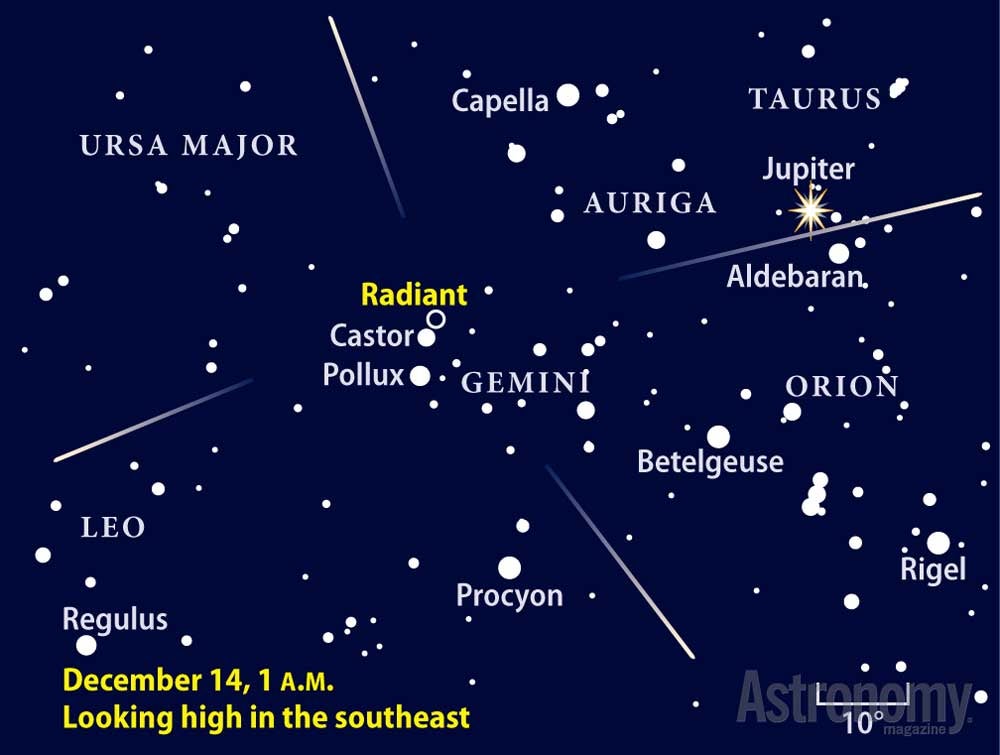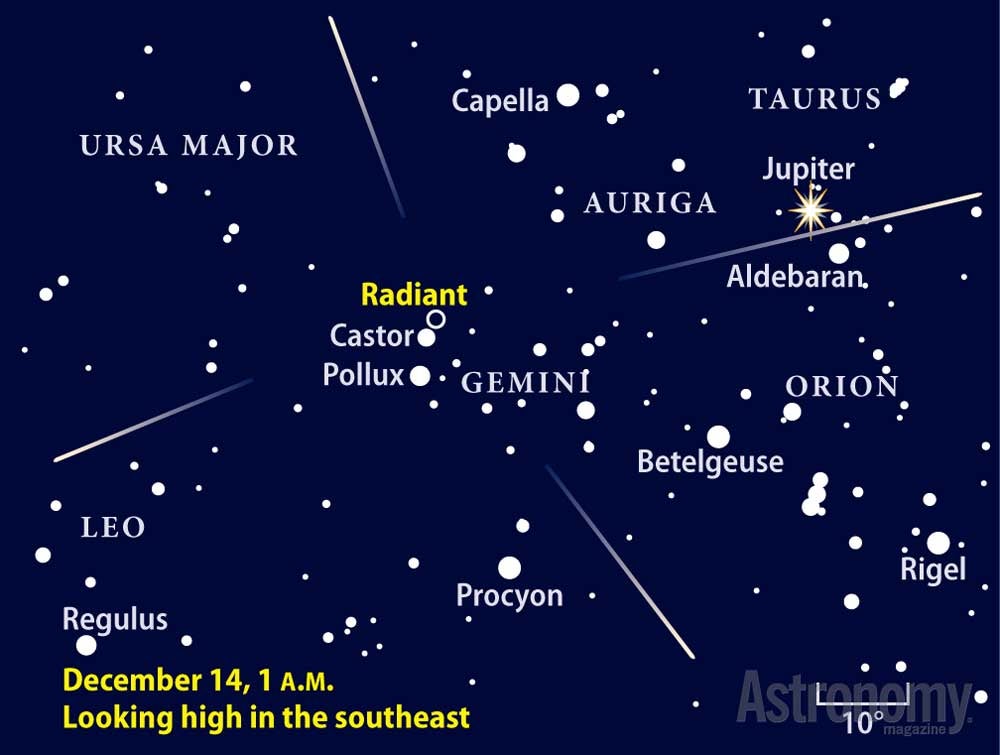One of the year’s most prolific meteor showers makes its appearance in mid-December. The Geminid shower peaks before dawn December 14. Although often considered a poor cousin to August’s Perseid shower, the Geminids frequently put on a better show. In a good year, observers can expect to see more than 100 “shooting stars” per hour — an average of nearly two per minute — at the Geminids’ peak.
Unfortunately, 2011 isn’t the best year for the Geminids. The Moon reaches its Full phase December 10, and by the 13th still appears about 85 percent lit. With bright moonlight in the sky from shortly after dusk until dawn, fainter meteors will be washed out, and only the bright ones will shine through. Under clear skies, attentive observers could see perhaps 20 to 25 meteors per hour — not great, but better than all but a handful of nights during 2011.
One way to compensate for the Moon’s presence is to find a spot where a building or tree blocks the Moon from view. This will make the sky appear darker. Then, focus your attention in the direction opposite where the Moon lies. Also try to observe from a rural location, where the lights of the city won’t add to the Moon’s glow.
Because December nights tend to be cold, bundle up in layers if you plan to view the Geminids. Reclining in a lawn chair is a great way to take in a lot of the sky at once, but be sure to get up and walk around occasionally. It also helps to drink some hot coffee or tea.
The Geminids begin as tiny specks of dust that hit Earth’s atmosphere at 78,000 mph (126,000 km/h), vaporizing from friction with the air and leaving behind the streaks of light we call meteors. The meteors appear to emanate from the constellation Gemini the Twins (hence the shower’s name), near the bright stars Castor and Pollux. This area passes nearly overhead during the early morning hours.
Less than 10 days after the Geminids, the Ursid meteor shower peaks. This shower reaches its maximum before dawn December 23. Although the Ursid shower typically produces only 10 meters per hour, it occasionally spikes to rates five times higher. Even better, the New Moon won’t hinder the view at all. Ursid meteors appear to radiate from the constellation Ursa Minor, near the top of the Little Dipper’s bowl.
Fast facts:
- The dust particles that create the Geminids don’t originate in a comet as those in most annual meteor showers do (like the Ursids and the periodic comet 8P/Tuttle). Studies of Geminid meteors show they coincide with the orbit of an asteroid called Phaethon. Perhaps this object was once a comet that passed through the inner solar system so many times that it lost all its ices, leaving behind a rocky object that only appears to be an asteroid.
- Although 78,000 mph (126,000 km/h) may seem fast, Geminid meteors are slower than most other major annual showers. The Leonids of November hit our atmosphere at 159,000 mph (256,000 km/h).
- Video: How to observe meteor showers, with Michael E. Bakich, senior editor
- Video: Easy-to-find objects in the 2011/2012 winter sky, with Richard Talcott, senior editor
- StarDome: Locate the constellations Gemini and Ursa Minor in your night sky before this meteor shower with our interactive star chart.
- Sign up for our free weekly e-mail newsletter.












